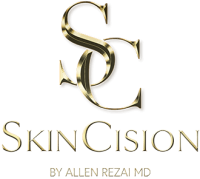Approximately 50 million men and 30 million women suffer from hair loss and thinning, issues that often worsen with age or stress. These challenges often intensify with age, particularly after the age of 50, or due to increased stress levels. Despite the plethora of available treatments, their effectiveness is highly variable. However, one treatment stands out for its scientific backing and promising results: Platelet-Rich Plasma (PRP) therapy. This innovative approach leverages the body’s natural healing processes to rejuvenate hair follicles and promote hair growth, offering a beacon of hope for those struggling with hair loss.
The Science Behind PRP Therapy
Platelet-Rich Plasma (PRP) therapy has become a revolutionary treatment for hair loss by utilising the body’s natural healing abilities to rejuvenate hair follicles and stimulate growth. This process involves drawing a small amount of the patient’s blood, processing it to concentrate the platelets and growth factors, and injecting the PRP into the scalp. Research by leading plastic surgeons and dermatologists highlights PRP’s effectiveness, especially for androgenetic alopecia (AGA), a common form of hair loss influenced by genetics and hormones. Unlike traditional treatments that often come with side effects and limited efficacy, PRP therapy offers a natural and minimally invasive alternative.
Mr. Allen Rezai, a Senior Consultant in Plastic, Aesthetic, and Reconstructive Surgeon, has achieved notable success with PRP therapy in his practices in London Harley Street and in Dubai. PRP therapy has demonstrated significant improvements in patients experiencing hair thinning and loss. PRP therapy’s ability to harness growth factors from the patient’s blood to stimulate hair follicles results in prolonged hair growth phases and reduced shedding. This bespoke all-natural treatment minimises allergic reactions and side effects, providing a safe and effective solution for restoring hair density and maintaining hair health.
Exploring Androgenetic Alopecia
Androgenetic alopecia, commonly referred to as pattern baldness, is a prevalent form of hair loss influenced by both genetic and hormonal factors. The primary hormone involved is dihydrotestosterone (DHT), which adversely affects hair follicles, leading to their gradual miniaturisation and eventual cessation of hair production. This condition affects millions globally, manifesting as receding hairlines in men and diffuse thinning in women. Despite the availability of FDA-approved treatments like finasteride and minoxidil, their effectiveness varies significantly among individuals, and they often come with potential side effects that can deter long-term use.
The limitations of conventional treatments underscore the need for innovative approaches to managing androgenetic alopecia. Finasteride, an oral medication, works by inhibiting the conversion of testosterone to DHT, but it can cause side effects such as decreased libido and other hormonal imbalances. Minoxidil, a topical solution, can promote hair growth but may lead to scalp irritation and unwanted facial hair growth. Given these challenges, the search for safer, more effective treatments is crucial. Advances in natural therapies such as Platelet-Rich Plasma (PRP) offer new hope, leveraging the body’s natural healing processes to stimulate hair follicles and promote sustainable hair growth without the adverse effects associated with traditional medications.
The Scalp Microbiome’s Role in Hair Health
Emerging research reveals that the scalp microbiome plays a critical role in hair health, with imbalances potentially contributing to hair loss. A healthy scalp is predominantly inhabited by beneficial bacteria such as Cutibacterium and Staphylococcus species, which help maintain the scalp’s natural barrier and combat harmful microorganisms. Disruptions to this delicate microbial balance, caused by factors like stress, hormonal changes, or environmental influences, can lead to conditions such as dandruff, inflammation, and ultimately, hair loss.
Understanding the intricate dynamics of the scalp microbiome opens the door to innovative treatments that address the root causes of hair loss. By identifying and promoting the growth of beneficial bacteria, new therapies could restore microbial harmony and improve scalp health. This approach includes the potential use of probiotics, prebiotics, and targeted antimicrobial treatments to rebalance the scalp environment. Such advancements not only offer promising avenues for preventing hair loss but also for enhancing overall hair quality and resilience, providing a holistic solution to this widespread issue.
PRP Therapy for AGA Patients
A small controlled study involving 14 AGA patients assessed PRP’s impact on hair growth and the scalp microbiome. Participants underwent monthly PRP injections for six months, with notable improvements observed in both hair growth and bacterial balance. Key findings included:
- Hair Growth: Dermatoscopic analysis showed substantial enhancements in hair density, thickness, and overall growth, indicating the effectiveness of PRP in revitalising dormant hair follicles.
- Microbiome Changes: Swab samples from the scalp revealed notable shifts in bacterial populations. These changes suggest that PRP not only promotes hair growth but also plays a role in rebalancing the scalp microbiome.
Detailed Bacterial Analysis
- Phylum Level: The dominant bacterial groups remained Firmicutes, Proteobacteria, and Actinobacteriota, maintaining a stable microbial environment.
- Genus Level: Post-treatment analysis indicated an increase in beneficial bacteria such as Paenibacillus and Aeribacillus, which could contribute to a healthier scalp and improved hair growth.
This study underscores PRP therapy’s dual benefits: stimulating hair regrowth and enhancing the scalp’s microbial environment. These findings position PRP as a promising, holistic treatment for AGA, offering patients an effective solution to hair loss and scalp health.
Versatility of PRP Therapy
PRP therapy extends far beyond hair restoration, proving its versatility and effectiveness in various medical and aesthetic fields. This innovative treatment is also highly effective in facial rejuvenation, offering a natural approach to improving skin texture, tone, and overall youthfulness. By harnessing the healing properties of the patient’s own blood, PRP minimises the risk of allergic reactions and ensures natural-looking results, distinguishing it from synthetic alternatives.
In addition to its aesthetic benefits, PRP therapy is widely used in orthopedic medicine to treat tendon injuries and manage conditions such as osteoarthritis. The growth factors in PRP accelerate tissue repair and reduce inflammation, promoting faster recovery and long-term healing. Specifically for hair restoration, PRP stimulates dormant hair follicles, leading to increased hair growth and thickness without the need for invasive surgery. This makes PRP a comprehensive, multi-functional treatment that addresses a range of health and beauty concerns effectively and safely.
Identifying Bacteria Linked to AGA
The study revealed that specific scalp bacteria can either heighten the risk of hair loss or provide protective effects. For instance, bacteria like Olsenella and Ruminococcaceae UCG-004 are associated with an increased risk of androgenetic alopecia (AGA), whereas Ruminiclostridium 9 and Anaerofilum seem to offer protective benefits. These findings underscore the significant role of the gut-skin axis, indicating that gut bacteria may influence scalp health and hair growth.
Understanding the beneficial and harmful bacteria involved opens avenues for developing targeted treatments that address the scalp microbiome. Potential interventions could include probiotics, dietary adjustments, or other strategies aimed at fostering a balanced scalp microbiota. By promoting microbial balance, these approaches have the potential to enhance hair growth and provide renewed optimism for individuals grappling with hair loss.
Redefining Hair Restoration with PRP Therapy
PRP therapy emerges as a promising frontier in addressing hair loss and enhancing scalp health, especially tailored for AGA patients. By promoting thicker hair and potentially rebalancing the scalp microbiome, PRP offers a natural and minimally invasive treatment option.
While recent studies underscores the transformative benefits of PRP (platelet-rich plasma) therapy, not only in stimulating hair growth but also in restoring balance to the scalp microbiome, particularly in patients with androgenetic alopecia (AGA), continued and deeper research is crucial for fully explicating its potential as a reliable solution for AGA patients.
Detailed Consultation Is Key
Whether targeting signs of ageing, improving skin texture, or restoring hair density, PRP therapy stands out as a revolutionary natural approach in the field of cosmetic enhancements. A detailed consultation, correct technique, and treatment planning are essential for achieving optimal results. Schedule a detailed consultation with Mr. Allen Rezai at SkinCision By Allen Rezai MD in London Harley Street or at Elite Plastic & Cosmetic Surgery Group in Dubai now and discover if PRP therapy is right for you.
For information about PRP Therapy in general please visit: PRP PRF Therapy.
For details about procedures and treatments or for a consultation, advice and prices from our London clinic please call +447795065621 or use our ONLINE FORM.





